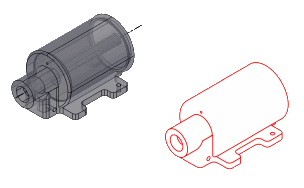
We insert a block with the same name, and AutoCAD will update the definition after we confirm it. Open text editor application such as Notepad. When you need to update a particular block, AutoCAD will search in this folder. You can place your blocks in this folder. In Files tab, under Working Support File Search Path add the block folder. Because we will add this folder in Working Support File Search Path. It’s important to use a specific folder for this purpose and not mixing it with other files. In this article, we use D:\Data as the example. If you want to update block named “title”, then save it as title.dwg. You need to explode the block, then save it as an external file with WBLOCK command. Preparing the blockīefore we start, we need to create the block in a separate file. We covered ScriptPro before it might be better if you read it first. In this article, we will cover how you can use an AutoCAD script and run it with ScriptPro. The downside of using a block is when we need to update it. Using a block as the title block is a common practice because we can reserve the text field with attributes. The frequent question I see is how to update title block in multiple files with a new definition. Sometimes we need to update a block definition, and sometimes we need to do on multiple files at once. but then who has time to sit around and read those menus anyway? Select the block you wish to edit and then you will see the dialog box found in Figure 1.Updating block is a common issue that AutoCAD users have. Interestingly enough, few of us have ever thought to use REFEDIT on blocks, and yet it's mentioned right there in the Modify pull-down menu. To follow along you need a previously inserted block that you're willing to make some minor modification to.įrom the Modify pull-down menu select In-place Xref and Block Edit. Most of us didn't think to try it out on blocks, even though technically blocks are referred to as references as well.

As it turns out, it's a fantastic block editor as well. This awesome command came to us in AutoCAD® 2000 with the chief goal of permitting the editing of attached external references. Redefining an existing block is not a very exciting task, tedious at best.Įnter the REFEDIT command to save the day.

make sure you use the same insertion point or all of the previously inserted blocks will move, and so on. go back into the block command, redefine it. You probably follow the same procedure we've all followed for years: Insert the block on the "0" layer. It's not uncommon for us to need to update our block definitions from time to time.


 0 kommentar(er)
0 kommentar(er)
